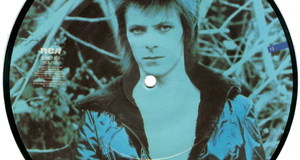From Elon Journal of Undergraduate Research in Communications VOL. 4 NO. 1The Influence of Rap and Hip-Hop Music: An Analysis on Audience Perceptions of Misogynistic LyricsIII. MethodThis study used cultivation theory to examine the media effects of misogynistic rap and hip-hop music on shaping audience attitudes toward intimate partner violence. By incorporating a qualitative content analysis and an online survey, this study analyzed the lyrical content of popular rap and hip-hop songs found on Billboard’s “Hot 100” chart over the past decade. The sample of 20 songs was drawn from Billboard’s YearEnd “Hot 100” singles list, which includes the most popular music from various music genres. These were chosen due to the specific violent or objectifying terminology found within the lyrics of top-ranked rap and hip-hop songs during this study’s qualitative content analysis. The Billboard “Hot 100,” issued weekly by Billboard magazine, is the music industry’s standard for measuring song popularity in the United States based on radio airplay, online streaming activity, physical CD sales and digital downloads (“Billboard Hot 100”). Nielsen Soundscan compiles the “Hot 100” chart rankings based on weekly audience impressions starting the first week in December each year (“Billboard Hot 100”). Year-end chart totals are calculated in the final week of November to determine the top 100 songs per year for all music genres combined (“Billboard Hot 100”). Cultivation TheoryThe meanings underlying the songs’ lyrical messages were analyzed through the lens of cultivation theory, which proposes “when people are exposed to media content or other socialization agents, they gradually come to cultivate or adopt beliefs about the world that coincide with the images they have been viewing or messages they have been hearing” (Gerbner, Gross, Morgan, & Signorielli, 1994, p. 22). Cultivation theory further asserts that the more audiences are exposed to factors such as sexual aggression, submission or violence in intimate relationships, the more they accept the objectification of women over time (Gerbner, et. al, 1994). This study specifically examined gendered audiences’ interpretation of misogynistic messages in popular rap/hip-hop songs to see if there were group differences in the effects of media content (Martino, et. al, 2006). Qualitative Content AnalysisContent analysis is described as “a research technique for objective, systematic and quantitative description of the manifest content of communication” to investigate messages and reduce them into categories (Rosenberry & Vicker, 2009, pg. 42). According to Zhang & Wildemuth (2009), qualitative content analysis “pays attention to unique themes that illustrate the range of meanings of the phenomenon rather than the statistical significance of the occurrence of particular text or concepts” (p. 309). Using a qualitative content analysis guided by cultivation theory, this study examined the presence or absence of violent misogynistic lyrics found in 20 popular rap and hip-hop songs between 2000 and 2010. The song lyrics were obtained from various Internet sources (e.g., azlyrics.com) and coded line by line. Songs were classified into one or more of the following coding categories based on images and messages conveyed in lyrics: demeaning language, rape/ sexual assault, sexual conquest and/or physical violence. Songs were also labeled according to their level of misogynistic content, based on the number of categories into which the lyrics were coded: high, medium or low levels of misogyny. The coding categories--derogatory naming and shaming of women; sexual objectification of women; and legitimation of violence against women--were adopted from Weitzer and Kubrin’s (2009) content analysis study and incorporated into this present study.Description of coding categories
Frequency/emphasis of misogynistic lyricsSongs were first coded for their misogynistic terminology and then evaluated for their amount of misogynistic content and labeled accordingly.
SurveyIn conjunction with performing a content analysis, this study administered a survey using Survey Monkey to gauge college students’ perceptions of the portrayal of intimate partner violence in the songs examined below. Surveys involve a correlational method by which researchers measure two or more variables and examine relationships between them (Rosenberry & Vicker, 2009). This 12-question survey was disseminated to a convenience, nonprobability sample of 62 Elon University students, 52 women and 10 men, representing sophomores through seniors. These students were asked via email or social media to click a link to a Survey Monkey questionnaire page. The first six questions asked respondents general questions about their views on rap/hip-hop music and interpretation of musical content. This involved a series of multiple-choice questions evaluating audience listening behavior; the emphasis on lyrics versus melody in this genre; the presence of offensive or degrading lyrical content; and the perception of rap/hip-hop artists overall. The remaining questions, dealing with misogynistic themes apparent in popular rap/hip-hop songs, were prefaced with a disclaimer: for purposes of this study, lyrics are considered misogynistic if they support, glorify, justify, or normalize the objectification, exploitation, or victimization of women. This included an adapted version of the definition of misogyny, as the “promotion, glamorization, support, humorization, justification, or normalization of oppressive ideas about women” to ensure that respondents were familiar with the term (Adams & Fuller, 2006, p. 940). Respondents were presented with multiple choice and Likert scale questions examining offensiveness in misogynistic lyrics; the prevalence of misogynistic lyrics in a sample of rap/hip-hop songs; and attitudes toward the issue of domestic violence. These questions examined specifically how the college-aged demographic was influenced by the prevalence of derogatory lyrics condoning violent sexual behavior. Students were asked to respond to a list of statements inquiring about their listening habits; opinions on rap and hip-hop songs; knowledge of domestic violence issues; exposure to misogynistic lyrics; and attitudes on sexism. Five of these categories were adapted from Tyson’s 2006 RAP scale, measuring interpretations of gender using empowerment and violent misogynistic constructs.Continued on Next Page » Suggested Reading from Inquiries Journal
Inquiries Journal provides undergraduate and graduate students around the world a platform for the wide dissemination of academic work over a range of core disciplines. Representing the work of students from hundreds of institutions around the globe, Inquiries Journal's large database of academic articles is completely free. Learn more | Blog | Submit Latest in Business & Communications |



















